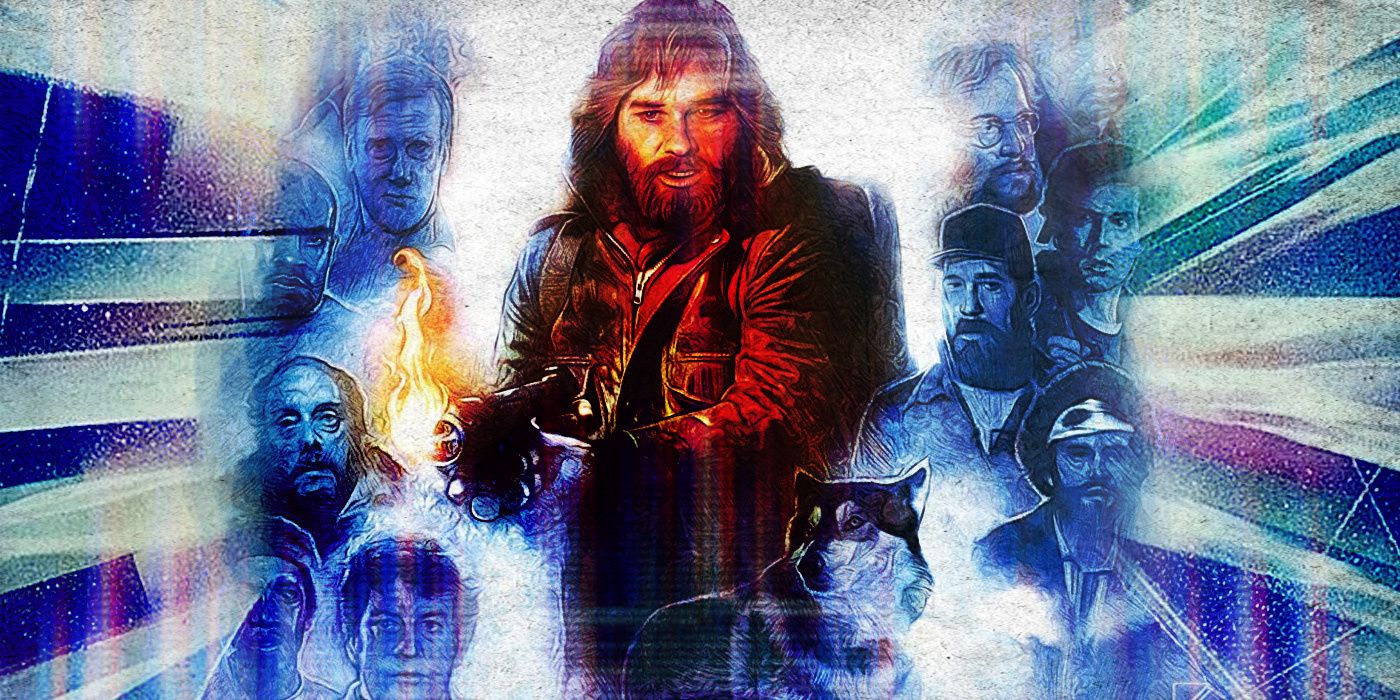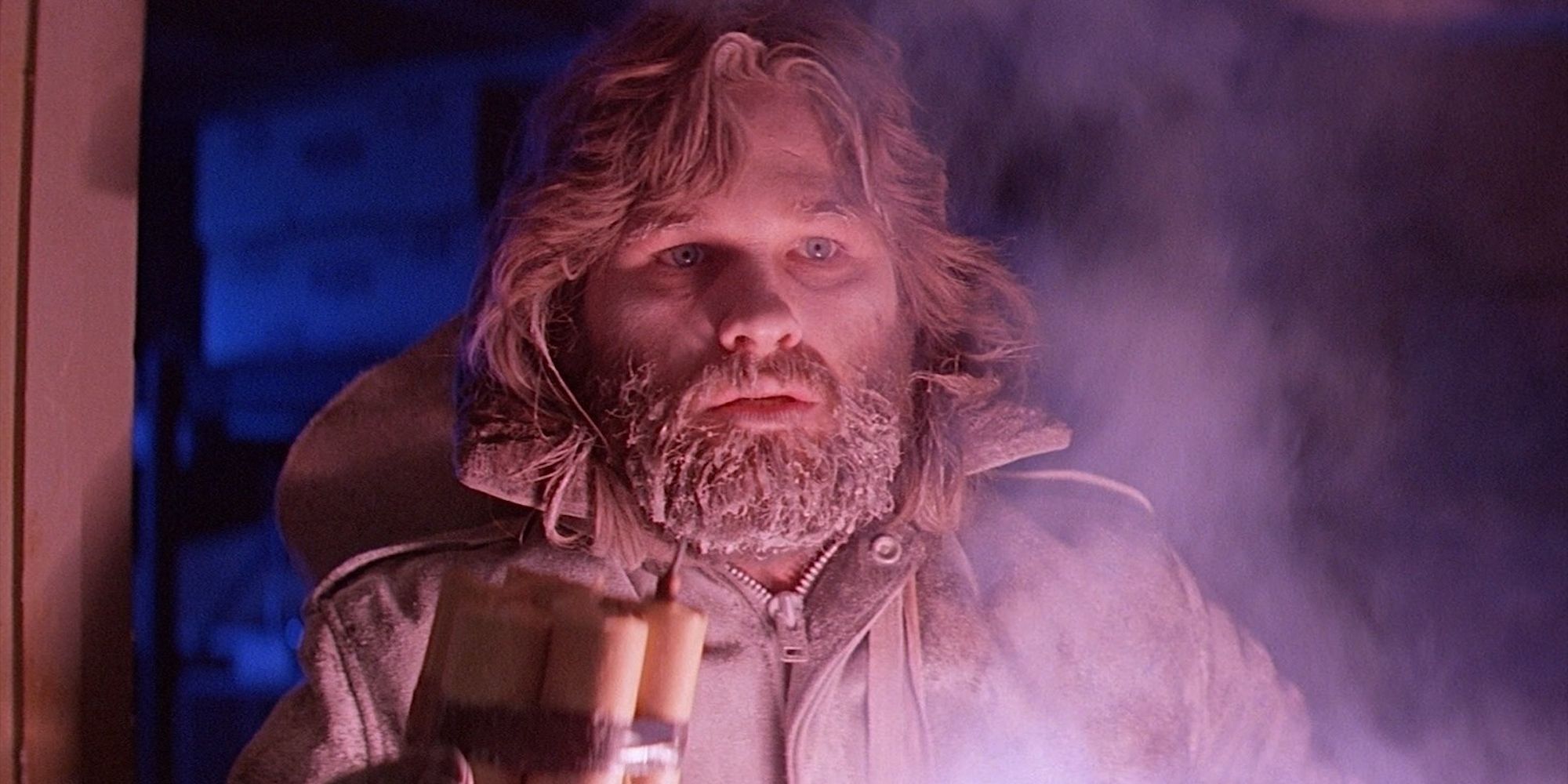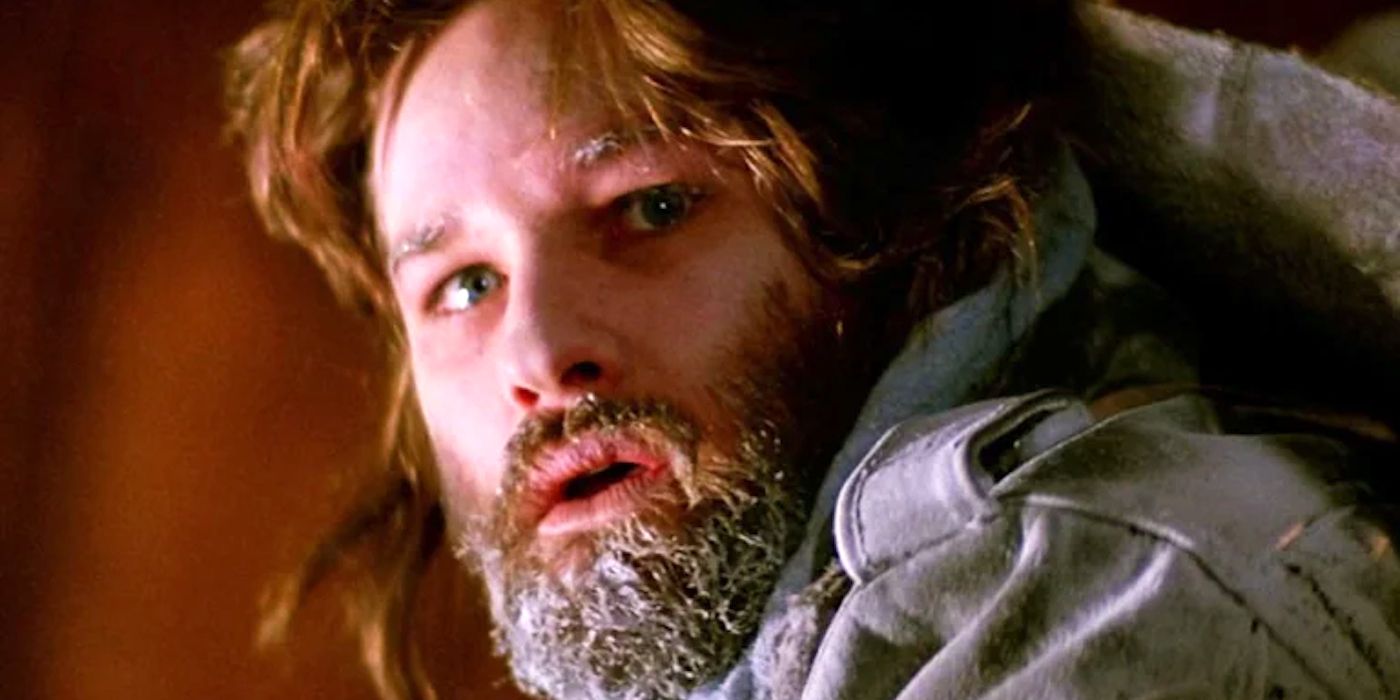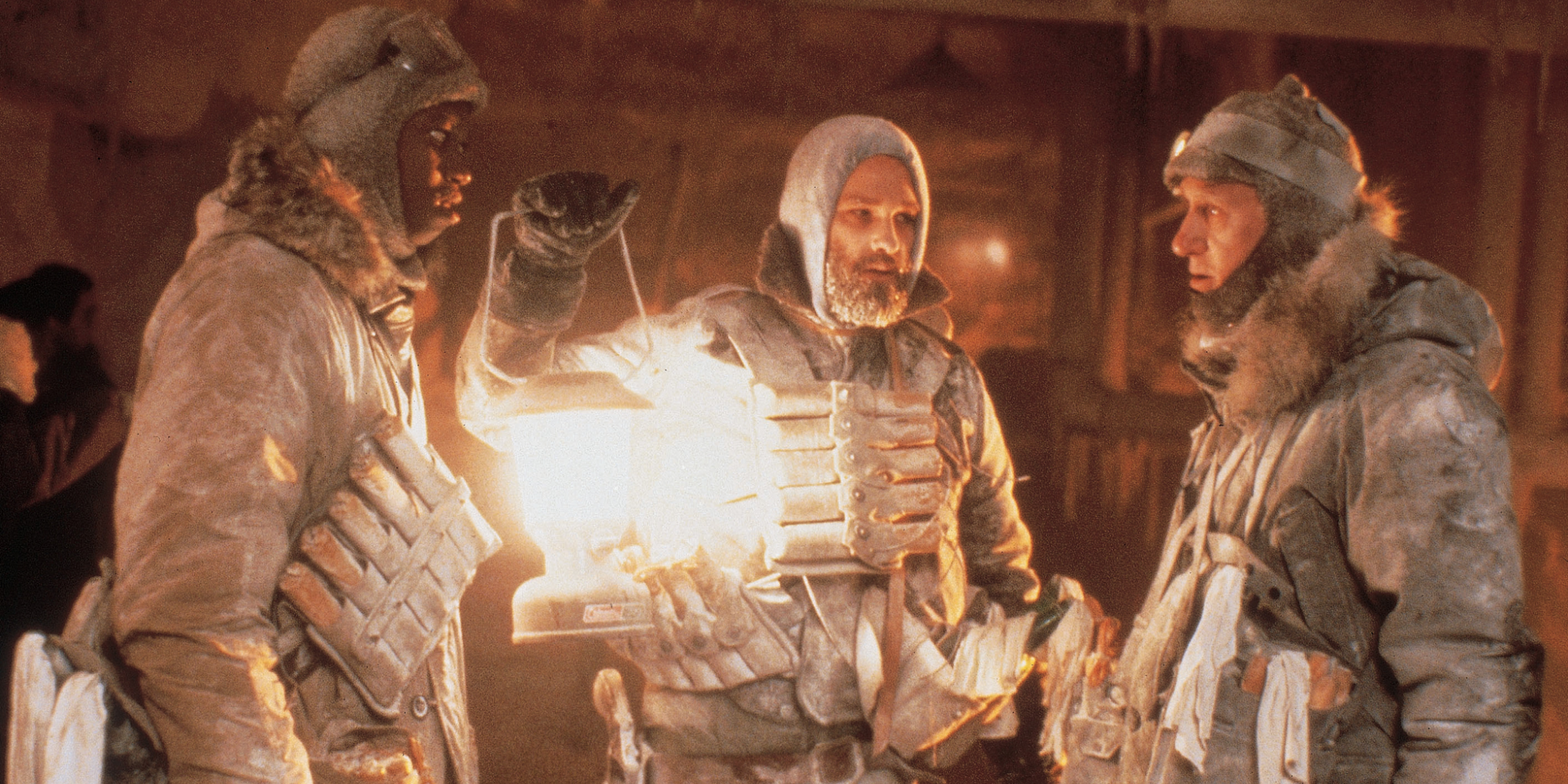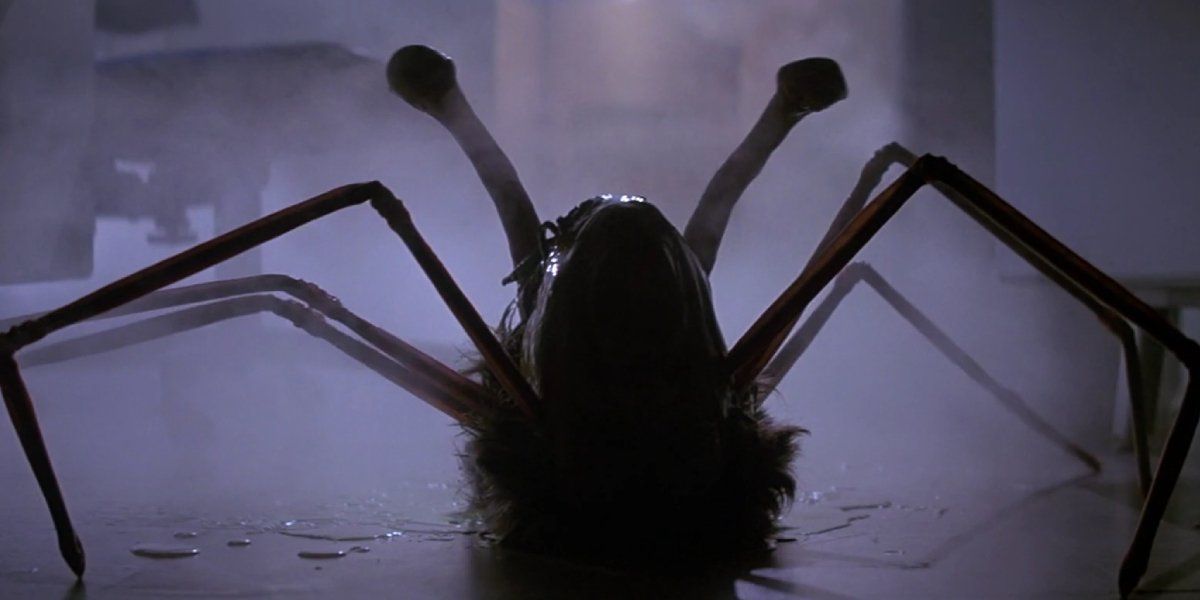The novella Who Goes There? by John W. Campbell was partly inspired by a 1916 Antarctic expedition led by Ernest Shackleton. After a 36-hour trek across the ice, Shackleton and two companions spoke of the shared sensation there had been a silent “fourth man” walking with them. This uncanny presence deeply affected the explorers and the report inspired Campbell’s story, which tells of an Antarctic research base infiltrated by an alien doppelganger. Who Goes There? became the basis for John Carpenter’s classic sci-fi horror, The Thing, which turns 40 this year.
The Thing is an all-time great paranoid shocker that’s truer to Campbell’s original story than the (equally great) 1951 version, The Thing from Another World. This was due no doubt to advances in special effects that allowed the depiction of the shape-shifting alien. In doing so, The Thing foregrounds the uncanny terror of the “other” suggested by Shackleton’s expedition, Campbell’s book, and similar films of the period.
Set in Antarctica, The Thing opens with a husky being pursued by two Norwegians into a US research facility. After the Norwegians are killed, the US team discovers the scientists at the nearby station apparently went mad after digging an alien artifact out of the ice. The husky reveals itself to be an entity that can copy any living organism and starts assimilating members of the base. MacReady (Kurt Russell) fights to discover who is still human before the thing copies them all, threatening life on earth.
The Thing takes its time developing a situation in which any character could be non-human. We know from the husky that the thing is able to copy the appearance and mannerisms of any living thing. Carpenter focuses on the dog at certain points, sitting under the base's pool table or wandering the corridors. There’s nothing unusual on the surface, but the audience’s privileged knowledge about the situation (we know we are watching a horror movie and have surmised that the husky is not what it seems) invests these moments with an uncanny tension. The dog's movement is studied for signs of the unnatural and, while there are no special effects involved, it becomes a sinister presence. The human characters in the story are unsuspecting at this point, with the significant exceptions of MacReady and Blair (Wilford Brimley), who will be key players in the climax of the film.
The audience is placed in the situation of having a sense of the other before the characters in the story. This is mirrored when the husky is put in the kennel with the other dogs. Like the viewer, they share an innate ability to see beyond surface appearance and immediately start growling at the interloper, which leads to the first transformation of the thing. Paranoia grows in the camp. “If I was an imitation, a perfect imitation, how would you know it’s really me?” asks Childs (Keith David). The viewer has already considered this disturbing "what if" scenario. At this point the film cleverly turns suspicion on the character with whom we are most identified.
MacReady has already differentiated himself from the (all male) group. He’s not a leader yet, being more interested in getting drunk in his cabin, but he led a second key discovery at the Norwegian base and was proactive in dealing with the attack, shooting the dogs and spurring Childs into action with the flamethrower. The audience should identify with him… except in the surface-questioning environment of the movie, doubts arise. Wouldn’t a copy start taking charge as he does, by way of increasing its survival chances? Alone in a room, he makes a heart-felt diary recording, but is that just for our benefit? And why does he keep passing around that bottle of J&B from which he’s been drinking?
In eliciting these suspicions, The Thing does an excellent job of drawing the audience into the growing terror in the base. The word uncanny is related to the German unheimlich, referring to something simultaneously normal and invoking a sense of the other. Freud wrote of this relation to the revulsion dolls and puppets can trigger. We now most commonly associate it with the “uncanny valley” effect of early CGI humans in films like The Polar Express. The Thing creates a space in which anything can be uncanny, because any living character can transform in an instant. Blair’s computer modeling shows him the high likelihood one or more of the team members is infected, as well as the time it would take the thing to overrun the entire population of the earth. It’s an apparent moment of shocking realization that spurs Blair to smash the base’s communication equipment – although this can later be reinterpreted, in another of the film’s many twists.
Suspicion on the base soon falls on MacReady, leading to The Thing’s two bravura moments. In the first, team member Norris (Charles Hallahan) appears to have a heart attack but, when Copper (Richard Dysart) uses a defibrillator, his chest splits open and bites off the doctor’s forearms. As the team torch the Norris/thing, its head splits from the body, drags itself along the floor by an elongated tongue, and sprouts spider legs. Created by Rob Bottin, it’s one of cinema’s great practical special effects, still remarkable to behold after 40 years. It's also the first time we truly see the thing in action, inverting Norris’ skull and turning it into an insect-like creature that watches from under a desk before trying to escape. It’s the uncanniest aspect of the scene, with the living head moving separate to the body and becoming something other. This elicits the film’s classic line, “You’ve gotta be f**king kidding!” That response seems an authentically human one. It voices the thoughts of the first-time viewer, although the character who delivers it will soon be revealed as an imitation.
The film’s next great scene comes immediately afterwards: the sequence in which MacReady draws out the thing by dipping a heated wire in blood samples. In Carpenter’s 1998 commentary for the DVD release of The Thing (a must-listen for any fan, as the director and Russell drolly discuss the secrets and challenges of making the movie), he reveals that this testing scene was his main reason for wanting to make the film. That’s a telling detail about Carpenter’s interest in the story. While The Thing is a spectacular monster movie, it is most effective in the slow build of paranoia that reaches a head at this moment. The audience is left guessing which of the remaining protagonists is a thing, with every facial expression and protestation of innocence up for examination.
MacReady is proven to be human by the test (at least we assume so) and the thing is drawn out, leading to a brief respite in which the remaining team members can trust one another’s authenticity. However, when they split up to test Blair, who has been isolated due to his unstable behavior, the thing starts picking off the survivors. MacReady’s showdown with the monster is an anti-climax, rather rushed and featuring a creature reveal that doesn’t equal the Norris/thing scene. This revelation of the thing (an amalgamation of the many forms it’s taken through the film) can’t match the uncanny fears elicited by the scenes of humans interacting with non-human copies.
The truly satisfying conclusion to the film comes when only MacReady and Childs are left, neither sure whether the other is human. It’s a final return to the uncanny as they prepare to either attack one another or freeze to death, both of which would be a good outcome for the thing. At least one team member, Nauls (T.K. Carter), is left unaccounted for. Suspiciously, as the ability of the thing to infect a host via ingestion was suggested earlier in the film, MacReady passes Childs his bottle of whiskey to share.
At the time of its release The Thing was compared (mostly unfavorably) to contemporaries such as Alien and Philip Kaufman’s remake of Invasion of the Body Snatchers. It certainly has surface-level similarities: the half-assimilated Bennings (Peter Maloney) howls like the alien copies in Kaufman’s film and the chest-bursting shock of the Norris/thing recalls Alien’s most famous surprise. However, The Thing shares concerns common to many horror films of the time, tapping into the deeply held fear that the appearance of another person is untrustworthy and subject to hidden motivations.
The Exorcist arguably started this trend towards depicting extreme transformations to elicit horror. What begins as an apparent haunted house movie soon turns its attention to the body of Regan (Linda Blair) as she becomes possessed. Beyond its most confronting scenes, The Exorcist is truly effective in the moments when it elicits uncanny shock in the sudden alteration of Regan’s voice or face. One early transformation, in which Regan “spiderwalks” down the stairs, was removed by director William Friedkin for the original theatrical release as it was judged too disconcerting.
Another uncanny depiction of the human is found in Michael Crichton’s Westworld, where the glowing eyes of the androids and the way they can abruptly freeze in place elicits unease. Kaufman’s Invasion of the Body Snatchers introduces the element of the shriek, where the pod people abandon their facade when they detect a human. It’s also in Stanley Kubrick’s The Shining, with the unsettling twins, doll-like and non-human enough to trigger terror. Finally, it’s present in Alien’s second great shock, the moment when Ash (Ian Holm) has his head torn off and is revealed as an android.
These transformations and the specific fears they evoke seem to be somewhat of the time. Maybe it was the all-suffusing paranoia of the Cold War era leeching into popular culture, or a more specific fear of technology and where it was headed. In a situation where artificial lifeforms are indistinguishable from humans, the uncanny invades the everyday world. Perhaps such fears have become passé in the 21st Century when we are used to the experience of uncanny technology, such as social media avatars and deepfakes. The creepiness of early CGI efforts to depict the human is now open to ridicule rather than unease, even referenced in kids’ movies like Chip ‘n Dale: Rescue Rangers. The CGI Mark Hamill in The Book of Boba Fett denies the uncanny (unlike very recent efforts such as The Mandalorian Season 2) in being almost perfect in its execution.
Of course, the fears brought to the surface in horror movies and our encounters with the almost-human reflect our lived experience. We can never really tell whether another person shares the internal existence we associate with the human. The Thing brilliantly accesses these fears, although it was not considered a success at the time. It found a bigger audience on video and DVD, and a cult following that eclipsed many of the films it was compared against. Just as it was only months after the encounter with the uncanny presence that Shackleton could discuss his experience, so perhaps The Thing was just too much to take in at the time of release.
Its rise to prominence on video seems fitting as The Thing rewards repeat viewing, particularly due to its ensemble cast. MacReady is one of Russell’s best roles, but the performances of David and Brimley are equally outstanding. Brimley’s insistence that he is feeling “much better” as he sits next to a self-crafted hangman’s noose is a highlight. On replay, every phrase and expression of the actors can be interrogated in a new light. And there are so many pieces of evidence to discover: the passage of the bottle of J&B through the film and Blair poking a pencil eraser into the alien remains, then tapping it against his mouth, to name just a couple. The secrets of The Thing hide in plain sight, waiting to be scrutinized again and again.

